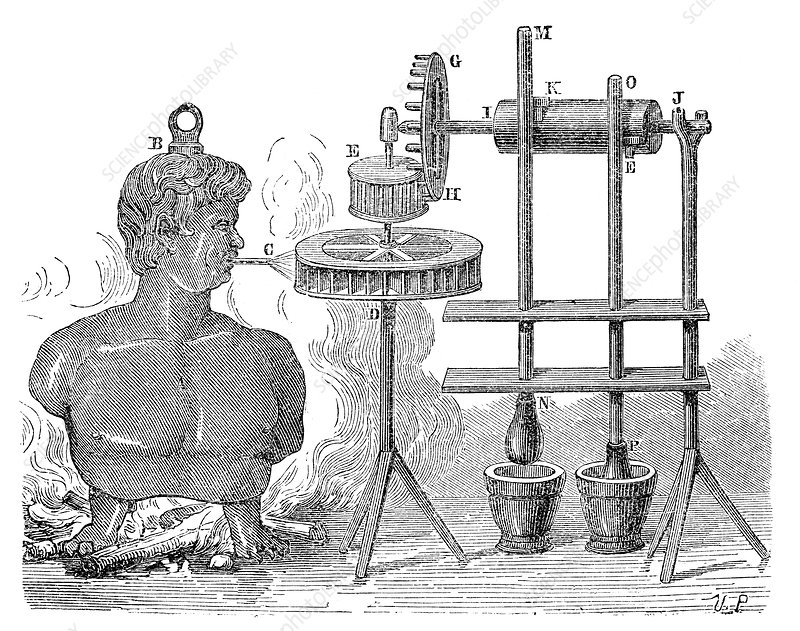Inventions during 1900 to 1940 A.D By Pushpendra
BALL POINT PEN (1888-1935):
American John Loud invents the ballpoint pen but it is not produced commercially until 1935.
A ball point pen is a pen which dispense ink over a metal ball at its point . The metals commonly used in making metal ball are steel , brass and tungsten. The design was conceived and developed as a cleaner and more reliable alternative to dip pen and fountain pen , and it is now the world's most-used writing instrument millions are manufactured and sold daily. Ballpoint pen ink is normally a paste containing around 25 to 40 percent dye. The dyes are suspended in a mixture of solvents and fatty acids. The most common of the solvents are benzyl alcohol or phenoxyethanol, which mix with the dyes and oils to create a smooth paste that dries quickly. Ball point pen are mainly manufactured in two types disposable and refillable. Refills allow for the entire internal ink reservoir, including a ballpoint and socket, to be replaced.
ESCALATOR(1900-1901): An escalator is a moving staircase which carries people between floors of a building or structure. It consists of a motor-driven chain of individually linked steps on a track which cycle on a pair of tracks which keep the step tread horizontal.
Charles D Seeberger joins forces with the Otis Elevator Company to produce the first practical device with moving stairs. It is exhibited at the Paris Exposition of 1900. The first commercial version is installed at Gimbel's department store, Philadelphia.
Different types of escalators include:
- Parallel: up and down escalators adjacent or nearby, often seen in perpendicular areas, malls , metro stations, etc.
- Multi Parallel :banks of more than one escalator going in the same direction parallel to banks going the other direction.
- Crisscross: escalators going in one direction "stacked" with escalators going the opposite direction oriented adjacent but perpendicular, frequently used in department stores or shopping centers.
- Components of escalator:
- Landing Platform: Landing Platforms are two platforms that covers the gears and motors that drives the stairs.
- Truss: The truss is the hollow metal structure that bridges the lower and upper landings, composed of two side sections joined together with cross braces across the bottom and just below the top.
- Handrail: The handrail provides a handhold for passengers while they are riding the escalator
- Balustrade Panel: Being made of either metal, sandwich panel, or glass, the balustrade panel supports the handrails of the escalator.
- Skirt Panel: The bottom of the balustrade is called a skirt panel. It is notorious in this art for being a frequent site of injuries and failures, due to the possible entrapment of materials (including body parts) in the machinery.
- Tracks: The track system is built into the truss to guide the step chain, which continuously pulls the steps from the bottom platform and back to the top in an endless loop.
- Steps:
HELICOPTER(1907):
In 1906, Jacques and Luis Breguet two brothers began experimenting with airfoils for helicopters. In 1907 , those experiments result in the Gyroplane No.1, possibly as the earliest known helicopter.
A helicopter is a type of rotorcraft in which lift and thrust are supplied by horizontally spinning rotors. This allows the helicopter to take off and land vertically , to hover, and to fly forward, backward and laterally.
Components of Helicopter:
Rotator System: Rotor system is the rotating part of a helicopter that generates lift. A rotor system may be mounted horizontally to provide vertical lift or it may be mounted vertically as tail rotor to counter the torque produced by horizontal rotor . The rotor consists of a mast, hub and rotor blades.
- Anti Torque: Most helicopters have a single main rotor, but torque created by its aerodynamic drag must be countered by an opposed torque. For this purpose Tail rotor is used
- Engine: The earliest helicopter engines were simple mechanical devices, such as rubber bands or spindles. For a half century before the first airplane flight, steam engines were used to forward the development of the understanding of helicopter aerodynamics, but the limited power did not allow for manned flight. The introduction of the internal combustion engine at the end of the 19th century became the watershed for helicopter development as engines began to be developed and produced that were powerful enough to allow for helicopters able to lift humans.
- Flight control: A helicopter has four flight control inputs. These are the cyclic, the collective, the anti-torque pedals, and the throttle. The cyclic control is usually located between the pilot's legs and is commonly called the cyclic stick or just cyclic.
OTHER IMPORTANT INVENTIONS:
Zeppelin, Hybrid Car, Geothermal Electricity, Electric Vacuum Cleaner, Electric Washing Machine, Electric Starter Motor, Refrigerator, Tank, Rotary Engine, Television, Quick Freezing Machine etc.
Conclusion:
20th century was a golden period for advancement of the society and human life , many inventions in the field of technology, science, entertainment, power generation are made which helped in forming the modern world.







Comments
Post a Comment